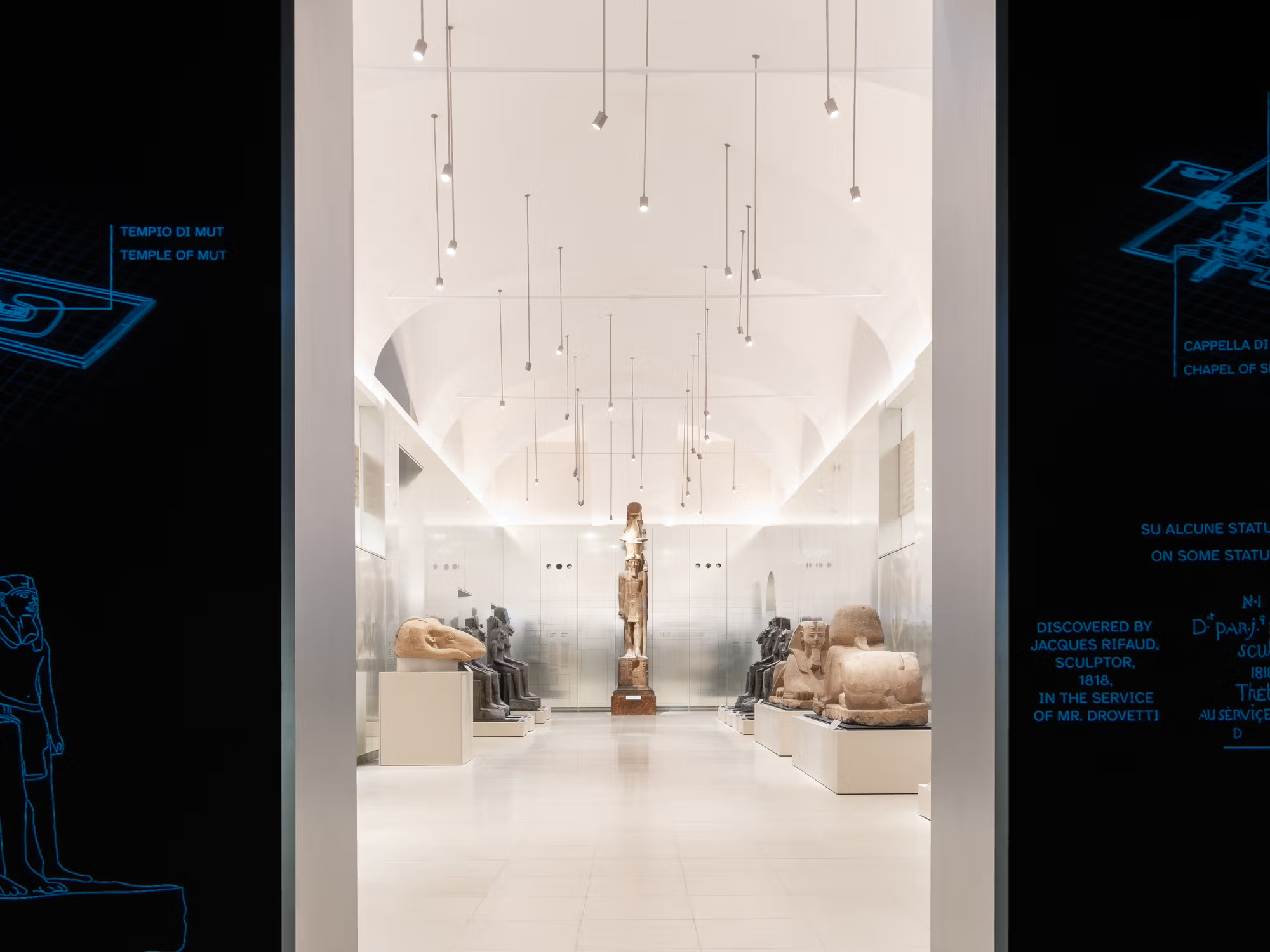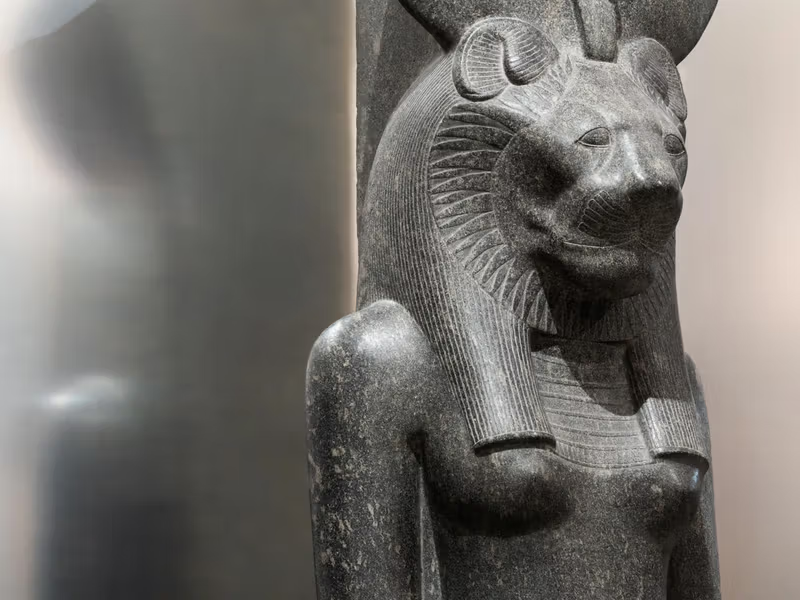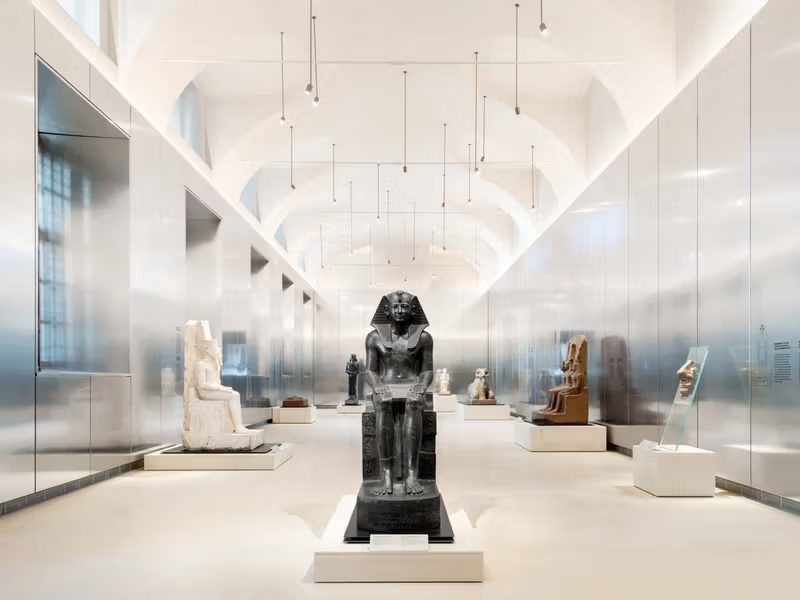
A team made up of Dutch firm Office for Metropolitan Architecture (OMA) and Italian practice Andrea Tabocchini Architecture has redesigned a gallery in Turin’s Egyptian Museum.
The new “Gallery of the Kings” will add information and historical context for statues recovered from the Karnak temple complex in the ancient city of West Thebes on the middle Nile.
The idea of the gallery is to lead visitors from darkness to light, symbolising the process of creation. So, they will enter through a dark hallway where digital projections depict the history of Karnak, where the statues were appropriated.
Further on, two exhibition halls are brightly lit, and are designed to mimic a journey through an ancient temple.
The first contains two sphinxes flanked by standing and seated statues of Sekhmet, the goddess of war, plague, medicine and chaos. This is inspired by processional avenues and sunlit courtyards.

Before entering the second hall, visitors will pass by a statue of pharaoh Seti II (1203-1197 BC), which was originally placed in front of the king’s chapel at Karnak.
The later exhibition area is reminiscent of the temple’s inner spaces, and contains Amenhotep II, who reigned in the 13th century BC. He is depicted offering wine to other statues of pharaohs. Another group of pharoahs and gods is arranged chronologically.
At the centre is a statue of Ramesses II (1303-1213 BC), and at the other end are effigies of the Ptah, the creator god, and Amun, Lord of Heaven, represented as a ram.
David Gianotten, OMA’s managing partner, said: “The opportunity to design the Gallery of the Kings compelled us to explore how the contemporary museum experience and the historical context of artefacts can coexist through architecture.”

Andrea Tabocchini added: “From the outset, we all saw this project as an opportunity to redesign a unique exhibition space. Culture must honour the past while remaining alive, evolving, being relevant in the present and inspiring the future.”
In 2023, OMA won a design competition to renovate the museum, adding a courtyard and interconnected public spaces. This is due to be completed next year.
Further Reading:










